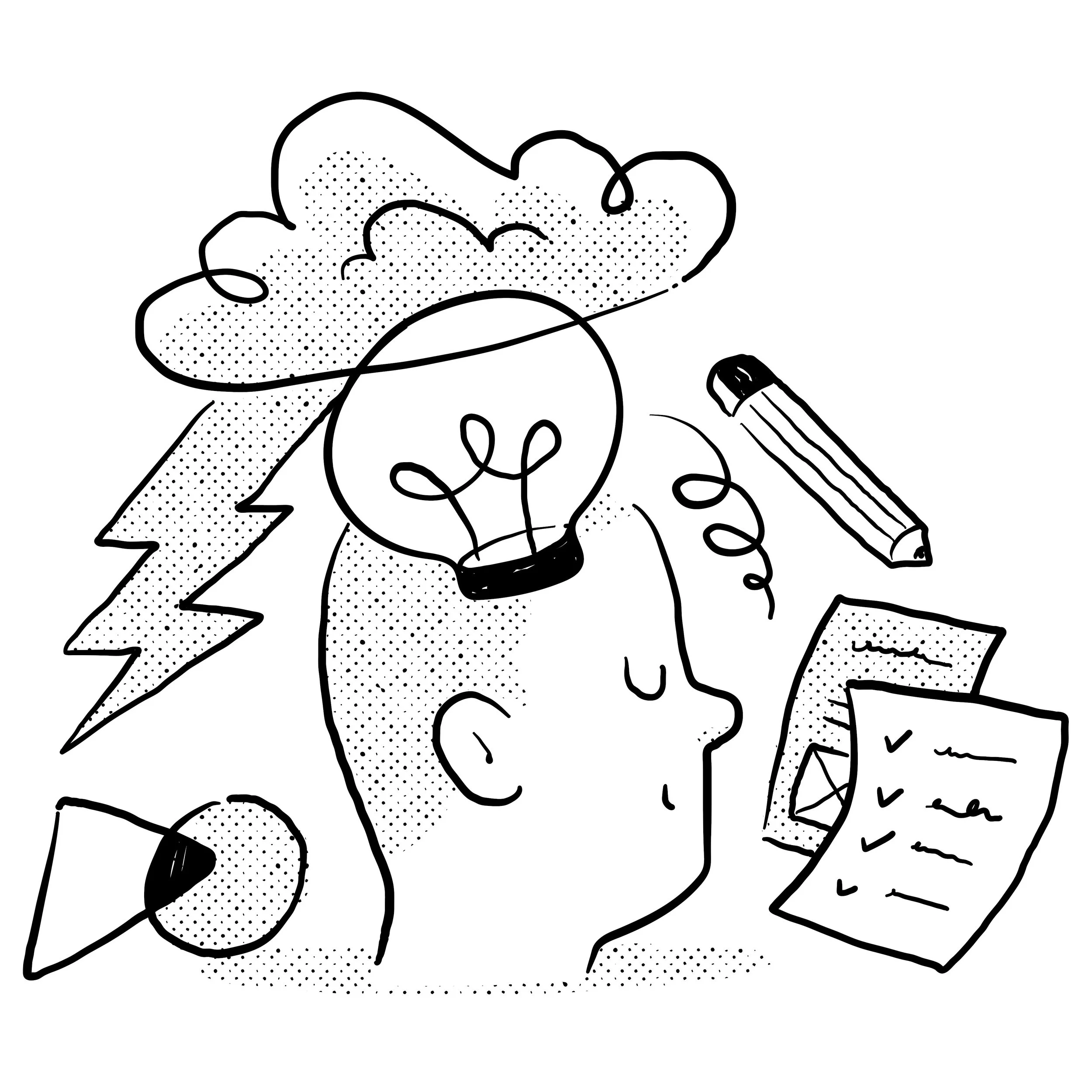From Insight to Impact
Scaling Mobile Engagement by 325% over 2 years
(2024 engagement)
196% growth
514K → 1.01M
(2025 engagement)
165% growth
1.01M → 1.67M
(2023-2025 CSAT)
92% growth
How strategic, mixed-methods research shaped product-market fit for a financial mobile app, resulting in a 325% increase in adoption and a 92% improvement in client satisfaction.
Overview
As the UX Researcher for two Advice mobile app product teams, I shaped product-market fit and designed research roadmaps that directly influenced adoption and engagement.
In 2023, I worked with the first team to establish strategic alignment and define opportunities for adoption. In 2024, I expanded to a second team, leading end-to-end research that informed roadmap decisions.
By 2025, I unified insights across both teams into a single research strategy, driving a 325% increase in mobile engagement and a 92% lift in client satisfaction, and demonstrating the impact of research-driven product strategy.
Goal
Grow mobile app engagement and adoption by aligning digital experiences with client needs, business objectives, and mobile channel strengths.
Problem
Business stakeholders questioned whether clients truly wanted to engage through the mobile app. This uncertainty created friction in securing buy-in and investment for development.
My Approach
-
Map client intents and behaviors in the mobile channel.
Segment clients and identify personalization opportunities based on needs and goals.
-
Clarify the core value of the service offering.
Translate service value into mobile-specific strengths, features, and capabilities that create differentiated client experiences.
-
Sequence features and capabilities along the maturity curve.
Prioritize investments based on client desirability, business objectives, mobile channel fit, and technical feasibility.
My Role
Sr. UX Researcher
Total Duration
2 years
Mixed methods research I conducted to uncover client motivations and unmet needs
Client intents and needs in mobile experience (2023)
Usability Assessment of Proposed Experience (2023)
Diary study & follow-up Interviews: Mobile Expectations for Advice Services (2023)
Jobs To Be Done: Mobile Advice Experience (2023)
Literature review: internal white paper on the value of Advice (2024)
Value of mobile as a channel fit for Advice services offer (2024)
Mobile-specific strengths that elevate the value of Advice to clients (2024)
Sequencing features along product maturity curve (2025)
Opportunity Space
2 types of investors work with an advisor
Those who prefer a Robo advisor
Those who prefer a human advisor
In 2023, a limited experience for investors with a human advisor existed and there was no experience for investors with a robo advisor. When the team was formed, they inherited an MVP design for a mobile experience for investors with a robo advisor.
My goal was to guide robo advisor product team in defining the app experience while ensuring that it was cohesive with the existing human advisor experience.
Research conducted
-
This product team inherited a design that was proposed for an MVP.
I conducted a usability assessment with 8 clients to gauge their reaction and expectations.
-
Work with data analysts on the web advice experience to see what clients engage with most frequently on the website when working with a robo advisor and human advisor.
Survey (n=150 completes) clients, evenly split between robo and human advisor clients, to understand what their expected intents are when using a mobile app.
-
Conduct a 7-day diary study using DScout. Participants are existing clients and prospects (do not do business with our institution) and are working with a human or robo advisor.
Diary study has them answer questions and give examples of “great” app experiences, clients provide feedback about the mobile app, all scouts show their expected aka table stakes activities in financial apps.
1 hr Interview with each (n=12) participant. Discussion guide proves and dives deep into existing experience (when interviewing clients) and expected experience (when interviewing prospects).
-
This framework defines inherent reasons to use the app when interacting with the service.
Clients (n=8) spoke about why they use the app, and whether their task is completed successfully.
Client intents when using a mobile app
Prior to our research, it was widely believed that the mobile app is for “checkers”, not “doers”. The belief was that clients go to the app to check their balances, not looking for interactive functionality.
Research Insight
Initial usability assessment, diary study, and JTBD interviews revealed frustration at not being able to take meaningful actions like contributing to a goal, running “what-if” scenarios, and using tools and calculators to “play with numbers”.
Decision Made
Resequenced the roadmap to prioritize goal-overview experience, ability to contribute and withdraw money, and the what-if simulator, over lower-value and non-actionable interface refreshes. Ensured these actions were optimized for the mobile channel’s unique interaction patterns.
Outcome
These prioritized features contributed to an increase in adoption between 2023 and 2024. Engagement deepened as clients began contributing to accounts in-app, and satisfaction scores rose significantly.
User segmentation and personalization
Robo advisor experience
Self-service at its core
Must provide an interactive experience
Tools and calculators
Access to money
Ability to withdraw/contribute
Human advisor experience
Co-generated at its core
Must be a relationship-building experience
Ability to contact advisor
Access to money
Ability to withdraw/contribute
New, enhanced experience
Self-service & co-generative
Provides access to money
Gives the ability to contact advisor or firm
Provides a detailed goals overview page
Provides success projections visually
Research Insight
Survey analysis revealed clear client segments with different needs. Some wanted simplified, high-level guidance; others sought in-depth tools and scenario planning. Clients also indicated a strong desire for personalization so the app felt relevant to their situation.
Decision Made
Introduced lite personalization features, including contextual prompts, appointment reminders, and push notifications. These were tailored to different client segments and prioritized above “nice-to-have” cosmetic updates.
Outcome
Lite personalization drove higher sustained engagement and stickiness. By 2024, engagement increased by 196% and client satisfaction score (CSAT) increased by 92%
By 2024 we added:
A new goals badge
Appointment reminder banner stripe
Appointment push notification for investors with a human advisor
Ability to contribute to their goal for investors with a robo advisor.
Our mobile app engagements (2023-2024) grew by 196%
514K → 1.01M
Product Value and Deliverables
2 types of value frameworks must intersect
Value of Advice services the firm offers
Value of mobile channel as an interaction path
A white paper has been published internally detailing the value framework of working with an advisor.
Mobile channel interactions are valuable and delightful due to their ability to utilize phone settings, producing unique interaction patterns and mobile-specific capabilities.
Research conducted
-
Review internal white paper on the value of Advice services, mapping out why investors choose to work with an advisor and the 4 distinct advantages they receive.
Map out appropriate value pillars and feature to include in the mobile app experience.
-
Quantitative (survey with n=200 completes) Kano model survey was conducted with clients using the mobile app.
They were asked to choose which listed features and capabilities they would like or would not like to see in the mobile app.
Quantitative Kano analysis in Excel was done to show the results: features and capabilities that are table stakes, market disruptors, neutral, and deterrents to the experience.
-
Synthesis of literature review and Kano model was cross-referenced to map client expected features and capabilities to each value pillar.
Mobile-specific strengths and interaction patterns were documented, and cross for current technical feasibility.
Final result was a list of features and capabilities to focus on and a research roadmap to explore them further.
Translating service offer value into mobile-specific strengths
Financial & Portfolio
Goal planning features
Portfolio management
Tax management
Emotional & Time
Behavioral coaching capabilities
Emotional support features and capabilities
Administrative support
New, enhanced experience
Provide a view into multiple goals
Advisor information in one place
Nudges to contribute when off course
Research Insight
Business stakeholders were skeptical that clients truly wanted to use the mobile app for financial advice. Research insights showed clients did want mobile access but needed reassurance around reliability, security, and parity with web experiences.
Decision Made
Unified research across both Advice product teams to prove client demand, reduce stakeholder risk perception, and define features that leveraged mobile’s strengths (push notifications, simplified flows) while ensuring parity with critical web functions.
Outcome
Stakeholder confidence increased, unlocking investment in mobile feature development. This alignment supported consistent year-over-year adoption growth and contributed to the overall 325% engagement increase.
By 2025 we added:
Multiple goals overview
Off track banner with CTA to contribute
Redesigned Goals card
Advisor card
Mobile app engagements (2024-2025) grew by an additional 165%
1.01M → 1.67M
Product Maturity Lifecycle
2 product activities needed to be defined
Mobile experience maturity lifecycle
Sequencing features along the maturity curve
By 2025, the app experience has consistently shown business value, engagement growth, and adoption.
We were now able to fully define our product - serving both investor types (robo and human advised), as well as features and capabilities to build on the app. We built the MVP and were ready to expand out vision into “enhanced” and “ideal” experience.
Frameworks created
-
Define the offer, dividing it into stages of maturity.
Identify which stage is the MVP, enhanced, and ideal experience.
Ideal experience goes beyond the channel and includes multi-device, and multi-channel interaction models.
-
Define and prioritize features and capabilities optimal for mobile experience based on client desirability, business objectives, and technical feasibility.
-
Combine the two previous frameworks and map out features along the maturity lifecycle.
Use this as a guide for product and research roadmaps.
Product Maturity Lifecycle
Research Insight
Through Kano analysis and competitive benchmarking, features were mapped across desirability, feasibility, and channel fit. Clients identified certain functions as “must-haves,” while others were differentiators that could wait for later maturity stages.
Decision Made
Developed a product maturity lifecycle roadmap:
MVP stage: table-stakes features (balance and goal view, contribution ability).
Enhanced stage: personalization, contextual prompts, push notifications, and appointment scheduler.
Ideal stage: integrated omni-channel scenarios and cross-device continuity.
Outcome
This sequencing reduced risk, kept delivery aligned with client demand, and ensured efficient use of development resources. It positioned the mobile app to mature strategically rather than chasing features opportunistically.











